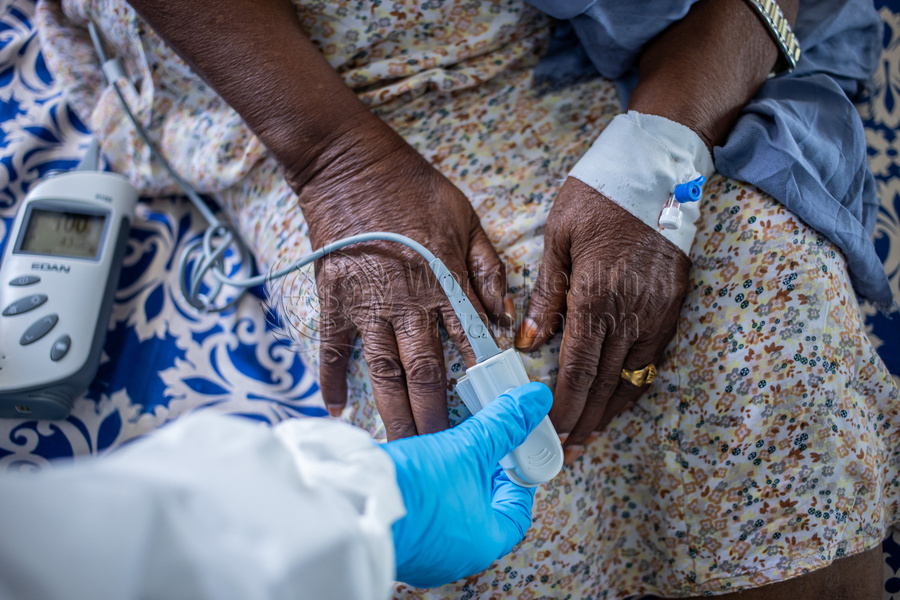Hospital admissions in around 10 countries have increased rapidly and at least six countries are facing shortages of intensive care unit beds. Demand for medical oxygen has spiked and is now estimated to be 50% higher than at the same time in 2020, yet supply has not kept up.
A rapid WHO assessment of six countries facing a resurgence found that just 27% of the medical oxygen needed is produced.
“The number one priority for African countries is boosting oxygen production to give critically ill patients a fighting chance,” Dr. Moeti said. “Effective treatment is the last line of defence against COVID-19 and it must not crumble.”
Insufficient quantity, disrepair or poor maintenance of production plants as well as challenges in distribution, scarcity of cylinders, personnel or technical skills are among the barriers to adequate medical oxygen supply in Africa.
In a WHO survey to which 30 African countries responded, only 18 countries had included corticosteroids in their national treatment guidelines, as recommended by WHO. Nine countries are including medications that are not recommended in treating COVID-19, such as hydroxychloroquine and lopinavir.
WHO is working with countries to improve COVID-19 treatment and critical care capacities by providing guidance on clinical management and support to update protocols and train health workers. Along with partners, the organization is also delivering essential medical supplies, such as oxygen cylinders and has supported the manufacture and repair of oxygen production plants.
The rise in cases comes amid inadequate vaccine supplies. The continent has vaccinated 52 million people since the start of the vaccine rollout in March this year, accounting for just 1.6% of the 3.5 billion people vaccinated worldwide. Only 18 million people in Africa are fully vaccinated, representing 1.5% of the continent’s population compared with over 50% in some high-income countries.
“The double barrier of vaccine scarcity and treatment challenges is seriously undermining effective response to the surging pandemic,” said Dr. Moeti. “However, with the expected fresh vaccine shipments and strong preventive measures, we can still turn the tide against the virus.”
Additional vaccines supplies expected in the coming weeks and months will help shore up the vaccination rates. Around 190 million extra COVID-19 vaccine doses will be needed to fully vaccinate 10% of the Africa’s population by September 2021, with around 750 million more doses needed to fully vaccinate 30% by the end of 2021.
Dr. Moeti spoke during a virtual press conference today facilitated by APO Group. She was joined by Dr. Jean-Jacques Mbungani Mbanda, Minister of Public Health, Hygiene and Prevention, Democratic Republic of the Congo, and Dr. Ishmael Katjitae, Physician Specialist, Ministry of Health and Social Services, Namibia.
Also, present were Dr. Richard Mihigo, Coordinator, Immunization and Vaccines Development Programme, WHO Regional Office for Africa; Dr. Thierno Balde, Team Leader, Operational Partnerships, WHO Regional Office for Africa; and Dr. Nicksy Gumede-Moeletsi, Regional Virologist, WHO Regional Office for Africa.
